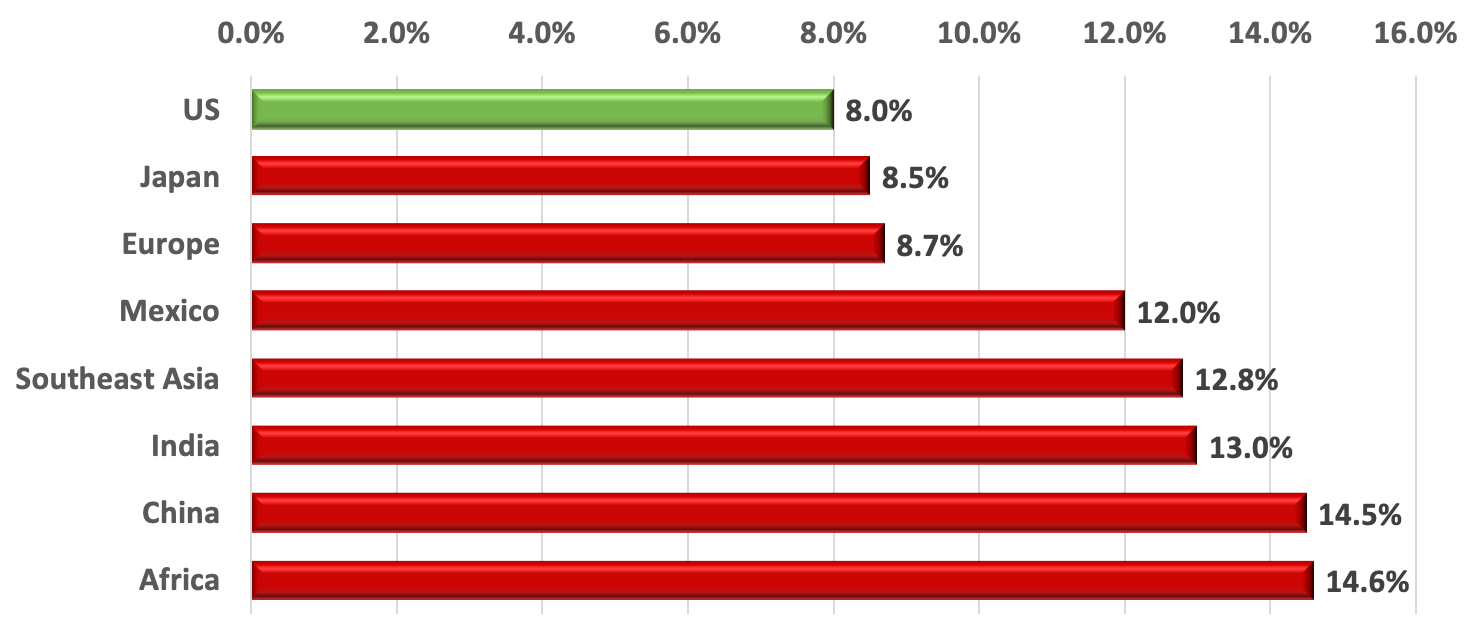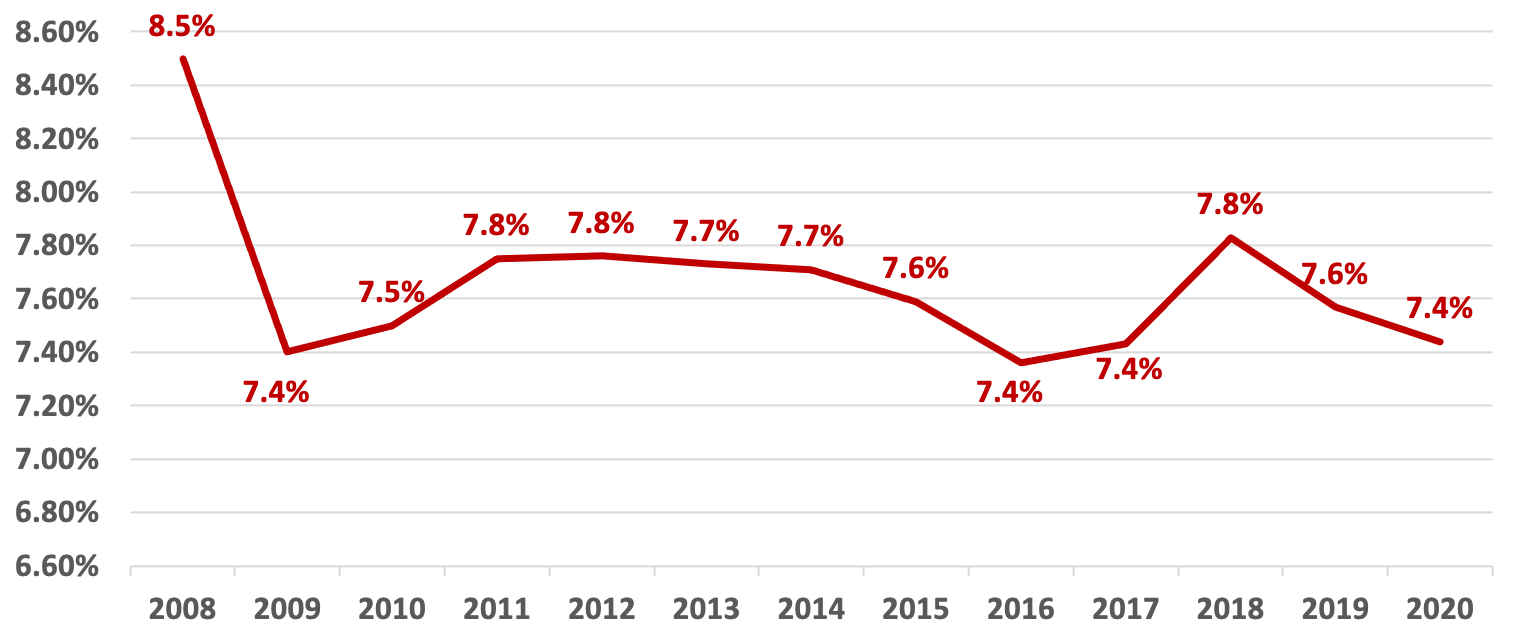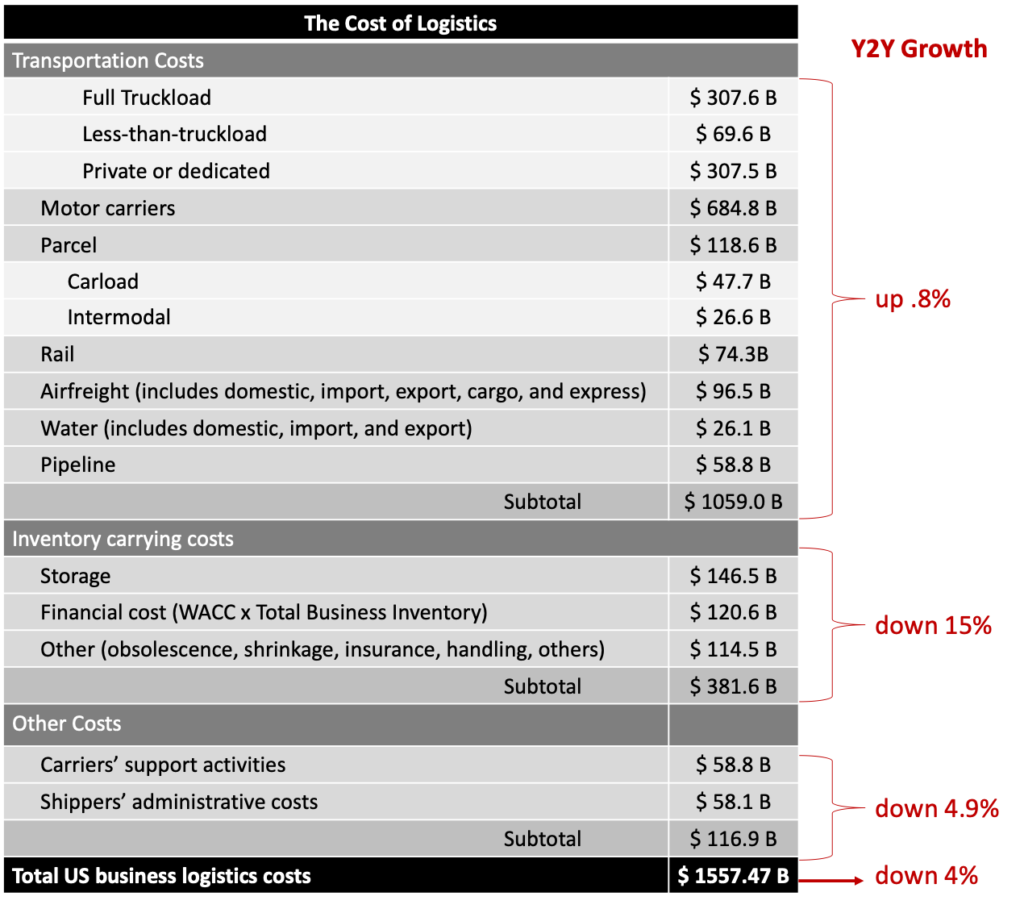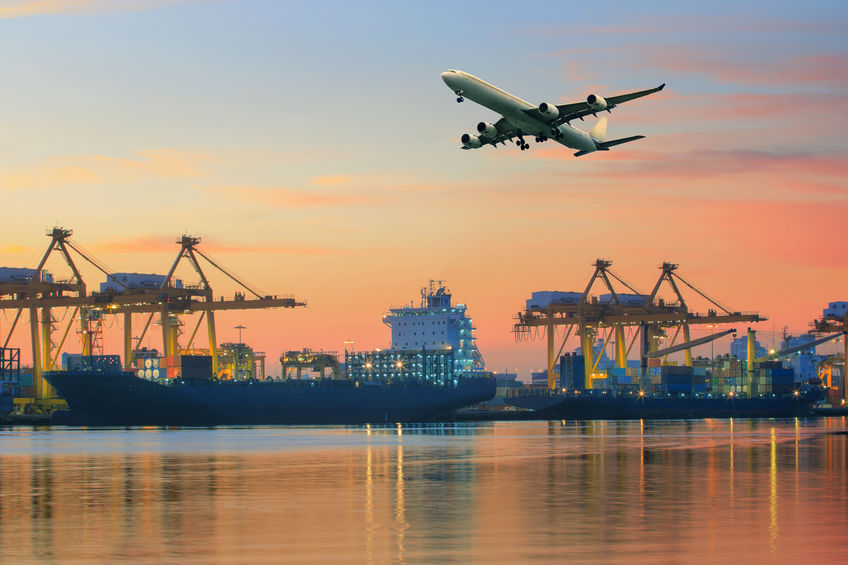In terms of trade and economic development, logistics makes the world go round. At 8% of gross domestic product (GDP), the United States has one of the most efficient, lowest-cost logistics systems in the world. Why should you care? As Figure 1.5 shows, logistics costs as a percentage of GDP vary significantly by country. Efficient and effective logistics can give your company a competitive advantage by lowering the total landed costs of products. Lower logistics costs also free up money to invest elsewhere in the economy.

For the U.S., logistics costs have been around 8% of GDP Gross Domestic Product (GDP) in recent years, equal to $1.56 trillion dollars in 2020.1 By contrast, in China, logistics costs average almost 15% of GDP, nearly twice as high as in the U.S. More efficient logistics in the U.S. help offset China’s labor cost advantage.

The numbers show that logistics is a huge industry—and both an economic driver and a creator of jobs.Breaks down total logistics costs by value-added activity for the United States. In 2015, this classification was updated to include parcel carriers, recognizing the growing influence of e-commerce on logistics costs. For the U.S., motor carrier transportation is the biggest single expense category. Almost every freight item in the US is on a truck for at least some part of its journey. These costs vary from country to country, with emerging markets spending relatively more on inventory due to their less efficient transportation and road systems. Poor Infrastructure creates greater uncertainty in lead-times for shipments and higher levels of obsolescence.
- 1990s: By the mid-90s, improvements in inventory management and better information technology contributed to a reduction in logistics costs to 10.2% of GDP. Inventory costs had been cut in half to around 4% of GDP. Transportation costs had declined to around 6% of GDP.
- 2000s: By the early 2000s, logistics costs declined slightly to between 8-9% before surging to almost 10% as global trade increased. Higher levels of exports required growth in inventories.
- Today: Over the past few years, logistics costs have remained in the mid 7% range until surging by 11.4% in 2018 because of rising prices as a result of robust economic growth and strong demand for logistics services. We can expect volatility in the numbers for 2021 and 2022 as COVID-caused supply chain snarls work through the global economy.Although transportation costs were up slightly in 2020, overall logistics costs actually dropped by 4%. “Why,” you ask? Inventory carrying costs declined by 15% and other administrative costs also dropped by 4.9%. This reality highlights the need to look at the entire logistics system. As the economy surges post COVID, logstics costs are likely to increase.
Table 1.1
U.S. Logistics Costs


Your takeaway: Companies have spent a great deal of effort to lean out or optimize logistics. They have reduced excess inventory, movement, and packaging by filling up truckloads out and backhauls in return. They have also deployed logistics assets more productively to offset fuel cost increases. All of these efforts have reduced your cost of living, leading to an increased standard of living!
Global Spotlight: Better Logistics Improves Living Standards
The costs of poor logistics are huge. They extend beyond wasted resources and unsatisfied customers. Poor logistics infrastructure can lead to malnutrition and starvation—even within a country that has enough food to feed everyone. The problem is getting the food to the people.
India is an ongoing and tragic case in point. Although roads are being built and the situation is improving, problems persist. Take the case of Lahu Bhiwa, a typical rural rice farmer in India. Prior to 2010, his only market was his local village. In 2010, as part of a huge infrastructure project, a road was paved from his village to a larger town about 20 kilometers away. Travel time shrunk from a three-hour walk to a 30-minute car drive.
Able to sell more, the Bhiwa family invested to improve farming productivity. With more crops to sell in a larger market, income increased 300%. The Bhiwa family’s life, “…has completely changed for the better,” since the roads were built. This family was one of the many who benefitted from over 600,000 kilometers of roads built by the Indian government during the past 10 years. Poverty has dropped by one third. About one-fifth of India’s 250 million people, however, still don’t get enough to eat every day.
Better logistics are improving living standards around the world. For example, in China, logistics investments have improved competitiveness, driven economic growth, and created jobs. Over 800 million people have escaped poverty since 1981. China’s ambitious Belt and Road initiative is designed to help land-locked portions of China gain access to markets in Eastern Asia and Europe and to raise livings standards in countries on the old Silk Road. The ultimate goal: Increase China’s influence from the Pacific to Europe.
After meeting with Xi Jinping to discuss heavy investments in infrastructure, President Joe Biden warned, “If we don’t get moving, they are going to eat our lunch. They’re investing billions of dollars. … We just have to step up.

